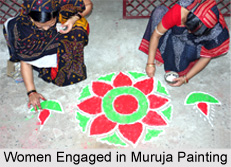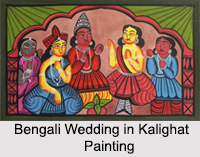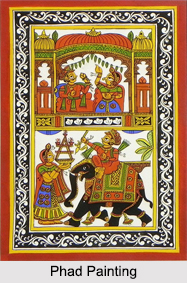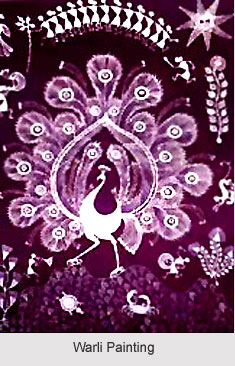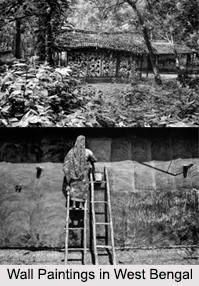 Due to the reign of many different rulers in the past, arts and crafts in West Bengal underwent many changes giving an artistic diversity today in the forms of traditional handicrafts, masks, wall painting, carving, music and dance etc.
Due to the reign of many different rulers in the past, arts and crafts in West Bengal underwent many changes giving an artistic diversity today in the forms of traditional handicrafts, masks, wall painting, carving, music and dance etc.
With their frescoes and ornamentation on the clay walls, the wall paintings in West Bengal is a form of folk art which is predominant in the tribal communities of Santal across the districts of Birbhum, Medinipur, Bankura, Burdwan and Purulia. This folk art is also practised by other tribal groups like the Dam, Sarak, Bhumij, Kamar and Kumor, etc, who reside at the base of the social hierarchy.
Theme of the Wall Paintings in West Bengal
It is the rural women folk who are the creators of these wall paintings which are influenced by their own personal experiences and their interaction with nature. The subject or themes depicted in these wall paintings are representation of a strong bond between the artist and their surrounding environment. There is a repetition in the form of shapes like banana groves and blooming lotus which are sometimes intermingled with images of domesticated wild animals, birds and also other geometric shapes.
Overview of Wall Paintings in West Bengal
The walls of these clay houses are basically the canvas and the artist uses their skill to either ornament the walls as frescoes or as reliefs. The reliefs are created on walls of newly constructed houses while frescoes are painted each year during auspicious occasions like marriage and birth or during religious festivals like Sohrai, which is the Santal harvest festival.
Before the walls can be painted, there goes a lot of layering and preparation which gives the wall a proper finish. A coating of "poli mati" or white paint is first applied on the wall and while it is still damp, designs are painted on it. The motifs are usually regular arches, birds, animals, vegetation and various geometric patterns. The colours used are mainly white, black, saffron and blue, which are natural pigments gathered locally. In the end, the designed paintings are drawn out on fingertips, small rags or brushes made from jute fibre.
Other than these, there are examples of some exquisite frescoes on temple walls like the Krishna drawn on the walls of Shyam Sundar Temple in Bohodu village of South 24-Parganas district and the other, on the walls of Brindaban Chandra Temple in Guptipara of Hooghly district.
In recent times, with the increase in urbanization, there are only a handful of villages that still does wall painting.

